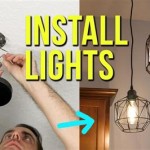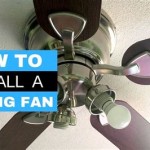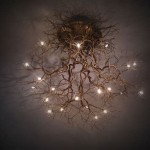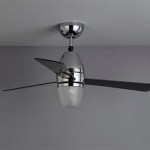Wiring for Recessed Lighting: A Comprehensive Guide
Recessed ceiling lights have become increasingly popular due to their ability to provide ample illumination while maintaining a sleek and modern aesthetic. As a result, installing recessed lighting has become a must-have upgrade for contractors and do-it-yourselfers (DIYers) alike. However, proper wiring is essential to ensure the safety and functionality of these fixtures. This guide will provide a comprehensive overview of the essential aspects of wiring for recessed ceiling lights, explaining the process, common wiring techniques, and safety precautions.
Understanding Recessed Ceiling Lights
Recessed ceiling lights, often referred to as "can lights" or "downlights," are fixtures that are installed directly into the ceiling, creating a recessed or "sunken" appearance. This design allows them to blend seamlessly with the ceiling while providing focused illumination. Recessed lights are typically used to accentuate architectural features, highlight specific areas, or create ambient lighting in both residential and commercial spaces.
Electrical Wiring Basics
Before delving into the specific wiring requirements for recessed ceiling lights, it's essential to understand some basic electrical wiring concepts. Electrical wiring involves connecting electrical devices, such as lights, switches, and outlets, to a power source while ensuring safety and proper functionality. This is achieved by using wires, which carry electrical current, and wire connectors, which create secure connections between wires.
Wiring Techniques for Recessed Lights
There are two main wiring techniques used for recessed ceiling lights: daisy chaining and home runs. Daisy chaining involves connecting multiple lights together in a series, with each fixture receiving power from the previous one. This method is more straightforward and requires less wire, but it also limits the flexibility of the lighting system and can create issues if one fixture malfunctions. Home runs, on the other hand, involve running a separate wire from each light fixture directly to the power source. This method offers greater flexibility and reliability but requires more wire and is more labor-intensive to install.
Safety Precautions
Electrical work can be hazardous if not performed correctly. It is crucial to prioritize safety throughout the wiring process. Always consult with a licensed electrician if you are unsure or uncomfortable performing electrical work yourself. Additionally, adhere to the following safety precautions:
- Turn off the power to the circuit you will be working on at the circuit breaker panel before starting any wiring.
- Wear appropriate safety gear, including gloves, safety glasses, and non-slip shoes.
- Use the correct wire size and type for your recessed lights as specified in the manufacturer's instructions.
- Make sure all wire connections are secure and use wire connectors that are specifically designed for the wire size being used.
- Double-check all wiring before turning the power back on.
Conclusion
Wiring for recessed ceiling lights requires a combination of technical knowledge, safety awareness, and attention to detail. By understanding the basic principles of electrical wiring, choosing the appropriate wiring technique, and following the safety precautions outlined in this guide, you can ensure a successful and safe installation that will enhance the illumination and aesthetic appeal of your space.

How To Wire Recessed Lighting Tabletop Walk Through

Diy Guide Installing Recessed Lights Step By

How To Wire Recessed Lighting Tabletop Walk Through

Installing Recessed Lighting Fine Homebuilding

How To Wire Recessed Lighting Tabletop Walk Through

How To Install Recessed Lighting Fixthisbuildthat

Wiring Recessed Lighting Doityourself Com Community Forums

How To Run Wire For Recessed Lighting Led Info

Energy Star Ask The Experts S

How To Wire Recessed Lighting Tabletop Walk Through








